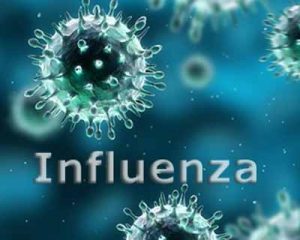- Home
- Editorial
- News
- Practice Guidelines
- Anesthesiology Guidelines
- Cancer Guidelines
- Cardiac Sciences Guidelines
- Critical Care Guidelines
- Dentistry Guidelines
- Dermatology Guidelines
- Diabetes and Endo Guidelines
- Diagnostics Guidelines
- ENT Guidelines
- Featured Practice Guidelines
- Gastroenterology Guidelines
- Geriatrics Guidelines
- Medicine Guidelines
- Nephrology Guidelines
- Neurosciences Guidelines
- Obs and Gynae Guidelines
- Ophthalmology Guidelines
- Orthopaedics Guidelines
- Paediatrics Guidelines
- Psychiatry Guidelines
- Pulmonology Guidelines
- Radiology Guidelines
- Surgery Guidelines
- Urology Guidelines
Swine flu protection in kids: Flu shot or nasal spray?

The injectable version of the vaccine against the 2009 H1N1 strain was found more effective than the inhaled quadrivalent live attenuated influenza vaccine (LAIV), reports Centre for Infectious Disease Research and Policy.
The findings published in the journal paediatrics were based on the analysis of pooled data from five US surveillance studies across three flu seasons in children and they confirm that among children, the nasal spray appeared to have reduced effectiveness against the flu, compared with the shot, in past flu seasons.
The investigators analyzed the data from five US studies conducted from 2013-14 through 2015-16 seasons comparing quadrivalent LAIV and the inactivated influenza vaccine (IIV) against lab-confirmed flu in children ages 2 to 17. Factors included influenza season, subtype, age-group, and prior vaccination status. They calculated vaccine effectiveness (VE) for LAIV and IIV based on test-negative study design.
Read Also:A new kind of influenza vaccine: One shot might do the trick
Of 17,173 patients from the five studies, 4,579 received IIV, 1,979 received LAIV, and 10,615 were unvaccinated. For IIV, VE was 67% against the 2009 H1N1 virus. For LAIV, however, VE against the same strain was 20% and not statistically significant.
The reduced effectiveness the scientists found for LAIV applied to all age groups. Results were similar in children vaccinated the previous season, meaning that prior vaccination status didn't explain the VE difference.
Compared with their IIV peers, kids who got quadrivalent LAIV has significantly higher odds of contracting 2009 H1N1.
Both vaccines, though, had similar effectiveness against H3N2 and influenza B. During the 2014-15 season dominated by a drifted H3N2 strain, VE was poor for both vaccines, regardless of previous season vaccination.
The authors of the study wrote that the overall findings were consistent by flu season and age-group and that the reduced VE they saw for LAIV against the 2009 H1N1 virus was similar to earlier published findings from the individual studies.
According to Pedro Piedra, MD, with the departments of molecular virology and microbiology and pediatrics at Baylor College of Medicine, the trivalent version of LAIV had much higher VE in children against seasonal H1N1, including new variants, which even prompted ACIP to issue a preferential recommendation for children ages 2 to 8 for the 2014-15 season.
Piedra said that the United Kingdom—which has a universal flu vaccine program for kids that mainly uses LAIV—has released an interim analysis for the 2017-18, which suggested an adjusted VE of 90.3% against 2009 H1N1.
Read Also: Influenza and common myths about flu vaccine
“Our results are consistent with findings of reduced VE of LAIV4 against influenza A/H1N1pdm09 in 2013–2014 influenza season, which prompted the change in the H1N1pdm09 LAIV4 vaccine virus from A/California/7/2009 to A/Bolivia/559/2013 for the 2015–2016 influenza season. Notably, we also observed lower effectiveness of LAIV4 compared with IIV against influenza A/H1N1pdm09 virus in 2015–2016, suggesting the effectiveness remained low despite the change to the A/Bolivia/559/2013 vaccine formulation,” write the authors.
On the basis of evidence for immunogenicity and protection in animal models of the updated influenza A/H1N1pdm09 vaccine virus, Advisory Committee on Immunization Practices (ACIP) reinstated the recommendation for use of LAIV4 in the United States as licensed for persons aged 2 to 49 years for the 2018–2019 influenza season as a vaccine option alongside age-appropriate IIVs and recombinant influenza vaccines.
For full information log on to http://pediatrics.aappublications.org/content/early/2019/01/03/peds.2018-2094#ref-28

Disclaimer: This site is primarily intended for healthcare professionals. Any content/information on this website does not replace the advice of medical and/or health professionals and should not be construed as medical/diagnostic advice/endorsement or prescription. Use of this site is subject to our terms of use, privacy policy, advertisement policy. © 2020 Minerva Medical Treatment Pvt Ltd